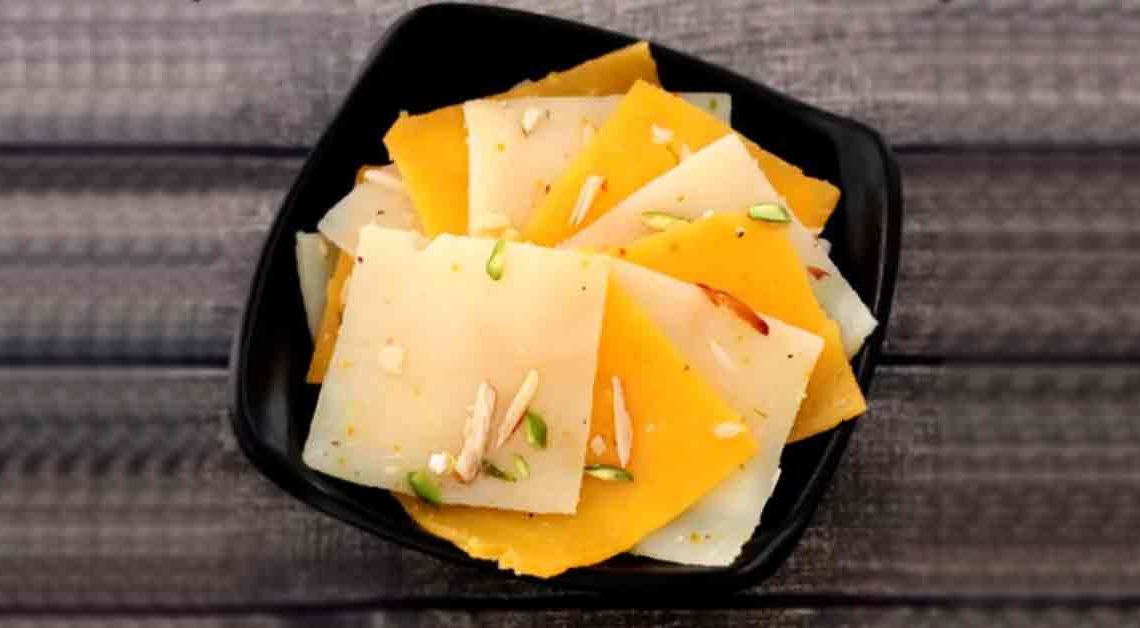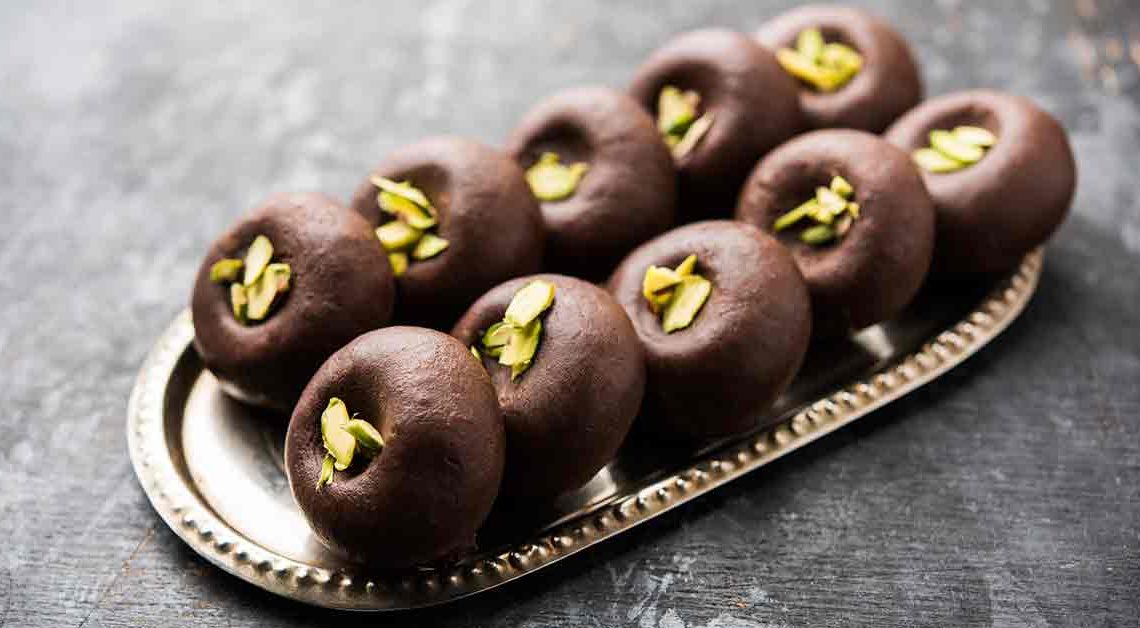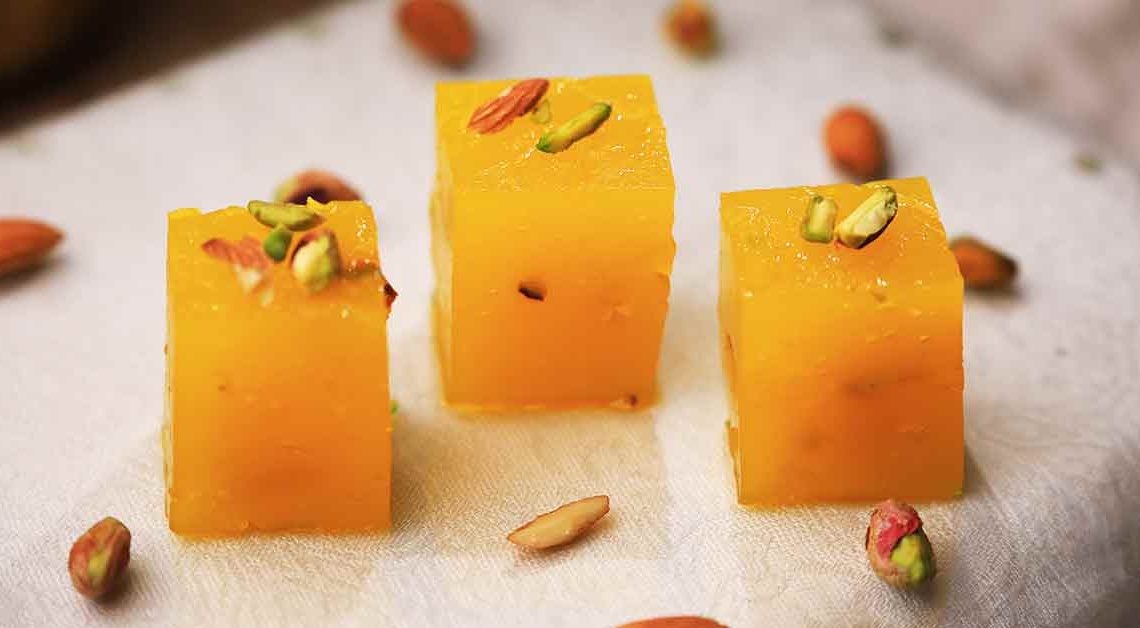Colorful Cassata: Bringing the Rainbow of Flavors to your Plate!

Eating a cassata is like riding on a rainbow rollercoaster; it’s so colorful and delicious that it’ll make you slide down Mithainama’s blogs! It is a typical Sicilian dessert that is popular as a special occasion delicacy. It combines liqueur-soaked sponge cake, ricotta cheese, candied fruits, and chocolate chips to produce a delectable blend of sweet, creamy, and fruity flavors. Anyone with a sweet craving should try this traditional Italian dish. It is certain to become a favorite because of its distinct flavor and texture.
Each layer of the dish is vital, each has its own distinct flavor and texture. The liquor soaks into the sponge cake, giving it a delicate sweetness, while the ricotta cheese lends a creamy, almost buttery texture. Candied fruits and chocolate chips add a sweet and delicious flavor to the dish. These flavors combine to produce an amazing taste experience that will undoubtedly make it my favorite.
Eating a cassata is like telling a joke – you don’t know how sweet the result will be until you try it. But if the joke falls flat, at least you can still enjoy the cassata!
Origin Of Cassata
The roots of cassata can be traced back to the Arab occupation of Sicily in the 9th century. The Arabs brought with them a love for intricate and indulgent desserts, often combining flavors of almonds, citrus, and honey. These culinary traditions fused with the local ingredients and techniques, giving rise to a unique Sicilian culinary identity.
Over time, it evolved under Norman rule in the 11th and 12th centuries. The Normans, who conquered Sicily, further refined the dessert, incorporating elements from their own gastronomic traditions. They introduced the use of ricotta cheese, candied fruits, and aromatic spices, creating the layered and complex flavors that characterize today.
Cassata’s popularity spread beyond Sicily and became an integral part of Italian cuisine. Regional variations emerged, each adding their own unique twist to the dessert. Today, it is enjoyed throughout Italy and is even celebrated in other parts of the world.
History Of Cassata
The history of cassata dates back to ancient times, with its roots embedded in the island of Sicily, Italy. The origins of this delicious dessert can be traced to the cultural influences and culinary traditions that have shaped Sicilian cuisine over the centuries.
The story begins during the Arab occupation of Sicily in the 9th century. The Arab conquerors introduced a variety of ingredients, techniques, and flavors to the island, including almonds, citrus fruits, and aromatic spices.
As Sicily came under Norman rule in the 11th century, further influences were incorporated into cassata. The Normans, hailing from France, brought with them their own culinary customs, including the use of ricotta cheese. Ricotta became a key ingredient in the evolving, adding a creamy and luscious element to the dessert.
Throughout the centuries, cassata continued to evolve and adapt. Different regions in Italy developed their own variations of the dessert, adding their unique twists and flavors. Today, it can be found in various forms, including the traditional round shape or as individual slices, with layers of sponge cake, ricotta cheese, candied fruit, and sometimes a touch of liqueur.
Cultural Significance Of Cassata
It holds significant cultural importance, particularly in Sicilian cuisine and Italian culinary traditions. It represents a culinary heritage that reflects the cultural diversity, artistry, and festive spirit of the Sicilian people. Here are some aspects of the cultural significance of cassata:
Symbol of Sicilian Identity: It is considered one of the iconic symbols of Sicilian cuisine. It embodies the rich history and cultural fusion of the island, showcasing the influences of Arab, Norman, and Italian culinary traditions.
Regional Variations: While it has a core set of ingredients, each region in Italy and even individual families may have their own unique variations of the dessert. These variations reflect local preferences, ingredient availability, and family recipes handed down over time.
Cultural Connection: It has transcended borders and gained recognition beyond Sicily. It has become an ambassador of Italian cuisine, representing the country’s culinary excellence and heritage.
Where Is Cassata Famous?
Cassata is famous primarily in Sicily, Italy, where it originated. It holds a special place in Sicilian cuisine and is considered a traditional dessert of the region. Sicilians take great pride in their dessert, and it is commonly enjoyed during festive occasions and celebrations.
While cassata’ fame originates in Sicily, it has also gained recognition and popularity throughout Italy. It can be found in various regions of the country, with different variations and adaptations based on local preferences and traditions.
Additionally, it has gained international fame and is enjoyed in many parts of the world where Italian cuisine is celebrated. Italian restaurants and bakeries in different countries often feature on their menus, allowing people to savor the flavors and experience a taste of Sicily’s culinary heritage.
Overall, while most famous in Sicily, it has transcended borders and become a beloved dessert cherished by food enthusiasts globally.
Interesting Facts And Trivia
Certainly! Here are some interesting facts and trivia related to cassata:
- It is believed to be one of the oldest desserts in Sicilian cuisine, with a history that can be traced back over a thousand years.
- The name “cassata” is derived from the Arabic word “quas’at,” which means “bowl.” This refers to the original shape of the dessert, which resembled a bowl.
- Traditional cassata is made with a round sponge cake soaked in liqueur, layered with sweetened ricotta cheese, and adorned with candied fruits and sometimes chocolate.
- The ricotta cheese used in it is often made from sheep’s milk, which lends a unique flavor and richness to the dessert.
- In Sicily, it is a popular treat during Easter, as it is traditionally associated with celebrations of rebirth and renewal.
- The process of making dessert can be time-consuming and intricate, as it involves baking the sponge cake, preparing the ricotta filling, assembling the layers, and decorating the exterior.
- Different regions in Sicily have their own variations of their own, with slight variations in ingredients and presentation. For example, in Palermo, it is typically covered in a green-colored marzipan layer.
- It has become a popular export and can be found in Italian specialty shops and bakeries worldwide, allowing people to enjoy this Sicilian delicacy outside of Italy.
- The candied fruits used to decorate are often made by preserving fruits in a sugar syrup, giving them a vibrant appearance and a sweet, chewy texture.
- It is not only enjoyed as a dessert but has also inspired other culinary creations, such as ice cream, where the flavors and elements of the traditional dessert are incorporated into a frozen treat.







